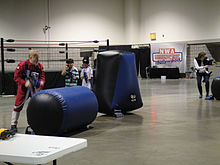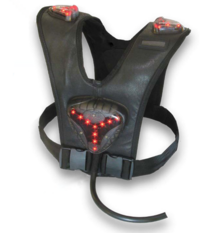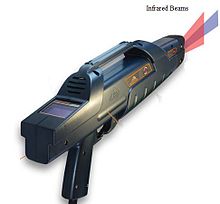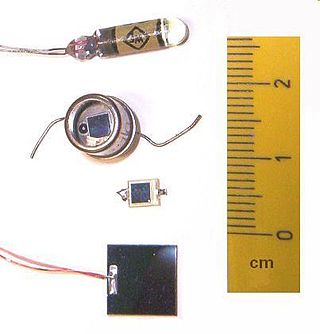
A photodiode is a semiconductor diode sensitive to photon radiation, such as visible light, infrared or ultraviolet radiation, X-rays and gamma rays. It produces an electrical current when it absorbs photons. This can be used for detection and measurement applications, or for the generation of electrical power in solar cells. Photodiodes are used in a wide range of applications throughout the electromagnetic spectrum from visible light photocells to gamma ray spectrometers.
Airsoft, also known as survival game in Japan where it was popular, is a team-based shooting game in which participants eliminate opposing players out of play by shooting them with spherical plastic projectiles shot from airsoft guns.

Photonics is a branch of optics that involves the application of generation, detection, and manipulation of light in form of photons through emission, transmission, modulation, signal processing, switching, amplification, and sensing. Photonics is closely related to quantum electronics, where quantum electronics deals with the theoretical part of it while photonics deal with its engineering applications. Though covering all light's technical applications over the whole spectrum, most photonic applications are in the range of visible and near-infrared light. The term photonics developed as an outgrowth of the first practical semiconductor light emitters invented in the early 1960s and optical fibers developed in the 1970s.
Toy guns are toys which imitate real guns, but are designed for recreational sport or casual play by children. From hand-carved wooden replicas to factory-produced pop guns and cap guns, toy guns come in all sizes, prices and materials such as wood, metal, plastic or any combination thereof. Many newer toy guns are brightly colored and oddly shaped to prevent them from being mistaken for real firearms.

The NES Zapper, also known as the Video Shooting Series light gun in Japan, is an electronic light gun accessory for the Nintendo Entertainment System (NES) and the Japanese Famicom. It was released in Japan for the Famicom on February 18, 1984, and launched alongside the NES in North America in October 1985.
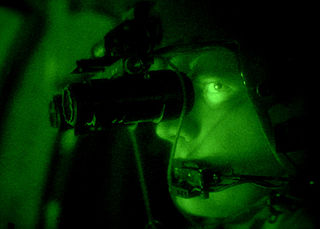
A night-vision device (NVD), also known as a night optical/observation device (NOD) or night-vision goggle (NVG), is an optoelectronic device that allows visualization of images in low levels of light, improving the user's night vision. The device enhances ambient visible light and converts near-infrared light into visible light which can be seen by the user; this is known as I2 (image intensification). By comparison, viewing of infrared thermal radiation is referred to as thermal imaging and operates in a different section of the infrared spectrum. A night vision device usually consists of an image intensifier tube, a protective housing, and may have some type of mounting system. Many NVDs also include a protective sacrificial lens, mounted over the front lens (ie. objective lens) on NVDs to protect the latter from damage by environmental hazards, and some can incorporate telescopic lenses. The image produced by an NVD is typically monochrome green, as green was considered to be the easiest color to look at for prolonged periods in the dark. Night vision devices may be passive, relying solely on ambient light, or may be active, using an IR (infrared) illuminator to visualize the environment better.
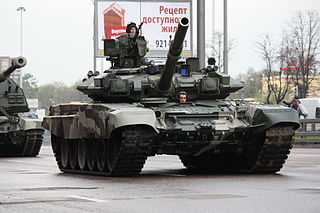
Shtora-1 is an electro-optical active protection system or suite for tanks, designed to disrupt the laser designator and laser rangefinders of incoming anti-tank guided missiles (ATGMs). The system is mounted on the Russian T-80 and T-90 series tanks and the Ukrainian T-84. The existence of Shtora was revealed in 1980 by spy Adolf Tolkachev.
Q-ZAR is a type of laser tag that was developed by Geoff Haselhurst, Peter Robertson and Omnitronics in Perth, Western Australia. The rights were later sold to Leisureplex Ltd, a company based in Ireland which in turn sold them to Q-ZAR International based in Dallas, Texas.
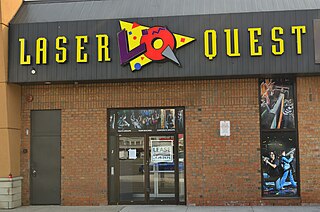
Laser Quest is a British indoor laser tag franchise founded in Manchester, United Kingdom in 1989. Its laser tag games use infrared (IR) hand-held units and vests. Laser Quest's oldest centre is located in Stourbridge, West Midlands, England.

Entertech was a brand of battery-powered motorized water guns sold in the United States from 1985 to 1990 by the now-defunct LJN. Unlike the colorful designs of many of the simple hand powered pump water guns of that time, most of the Entertech water guns were manufactured from black plastics with a matte finish to resemble real firearms.
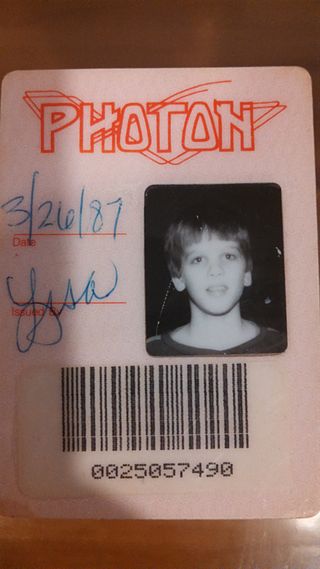
Photon was the name of the first commercial lasertag arenas. The company also came out with a home lasertag game, and there were various media tie-ins: a TV show also called Photon and a series of novels by Peter David.
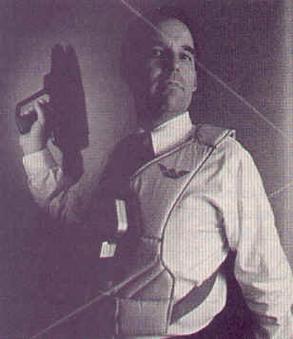
Worlds of Wonder (WoW) was an American toy company founded in 1985 by former Atari sales president Don Kingsborough, and former Atari employee Mark Robert Goldberg. Its founding was inspired by a prototype that became its launch product, Teddy Ruxpin. In 1986, it launched Lazer Tag and filed an IPO which Fortune magazine called "one of the year's most sought after stock sales". WoW partnered with the young Nintendo of America as retail sales distributor, crucial to the landmark launch and rise of the Nintendo Entertainment System from 1986 to 1987.

A laser weapon is a type of directed-energy weapon that uses lasers to inflict damage. Despite decades of research and development, as of 2023, directed-energy weapons, including lasers, remain at the experimental stage. Whether they will be deployed as practical, high-performance military weapons remains to be seen. One of the major issues with laser weapons is atmospheric thermal blooming, which is still largely unsolved. This issue is exacerbated when there is fog, smoke, dust, rain, snow, smog, foam, or purposely dispersed obscurant chemicals present. In essence, a laser generates a beam of light that requires clear air or a vacuum to operate.
Darkzone, Laserzone, Megazone, Ultrazone and Zone 3 are a group of laser skirmish sites that use laser tag systems manufactured by P&C Micros of Melbourne, Australia. These systems and sites are sometimes collectively referred to as being a part of the "Zone Empire" and in most cases incorporate the word "Zone" in their name.

Lazer Tag is a brand name for the pursuit game using infrared toy guns, generically known as "laser tag". It was developed by Worlds of Wonder and launched in 1986. As one of America's top hit toys of 1986-1987, Lazer Tag was aggressively leveraged by Worlds of Wonder's retail sales network in an ultimatum to force the Nintendo Entertainment System into retail stores, allowing its smash hit nationwide launch, which prompted Nintendo of America to lead the nation's recovery from the 1983 video game crash and dominate the industry. The Lazer Tag brand is currently a subsidiary of Hasbro's Nerf toy line.
WDP PAINTBALL LTD owns and operates NPF Bassetts Pole Adventure Park, a paintball site / adventure park in Birmingham., England. The company WDP is also known for manufacturing the Angel line of electropneumatic paintball markers.

Skirmish Paintball is a paintball arena company in the United Kingdom, Ireland, and Australia. Paintball venues operated under the Skirmish trademark are privately owned.
This is a list of infrared topics.

George Carter III is an inventor who created Photon, the first commercialized version of laser tag, as well as other inventions such as the personal watercraft and certain versions of all-terrain vehicles. George Carter invented the Photon after being inspired by Star Wars.

